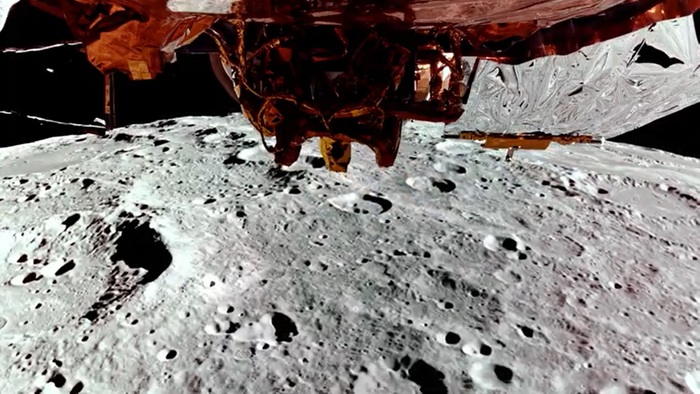The Moon has a new visitor: Firefly Aerospace’s Blue Ghost probe has successfully completed the first commercial lunar landing, marking a milestone in private space exploration. The Texas-based company, specialized in lunar landers, carried out the operation without incidents, surpassing previous failures by other companies.
The landing took place precisely on the slopes of an ancient volcanic dome in the Sea of Crises, an impact basin located on the visible side of the Moon. Confirmation of the landing came from the company’s mission control, with the team celebrating the achievement. According to company officials, the capsule avoided several hazards such as boulders and rough terrain and landed within the pre-established target zone.
On board Blue Ghost are ten scientific instruments from NASA, the U.S. government agency responsible for the country’s civilian space program and aerospace research, designed to study the lunar soil, test new technologies, and gather essential data for future crewed missions. Among these is a drill capable of measuring the temperature up to three meters beneath the surface, as well as a dust mitigation device, a challenge that had plagued astronauts during the Apollo missions.
Another goal of the probe is to capture images of the total solar eclipse expected on March 14, an astronomical event considered of significant importance. Half an hour after landing, the vehicle began transmitting images from the lunar surface, including a first “selfie” with the Sun in the background and a shot of Earth, appearing as a small bright dot in the dark space.
This launch marks a historic moment: Firefly Aerospace becomes the first private company to send a lander on the Moon without incidents. Until now, only five countries, including the United States, Russia, China, India, and Japan, had succeeded in this endeavor.
The operation is part of NASA’s Commercial Lunar Payload Services CLPS program, which aims to develop an extraterrestrial economy through collaboration with private companies. The U.S. space agency has invested $101 million in Firefly Aerospace’s mission, in addition to the $44 million allocated for the scientific instruments carried.
But Blue Ghost won’t be alone for long. Two other landers are already on their way, including the Intuitive Machines module, which will attempt a docking in the coming days. This scenario suggests a real commercial race to the satellite, with companies competing to provide exploration and transportation services to government entities.
Jason Kim, the CEO of Firefly Aerospace, reportedly commented on the success of the mission by saying that they had some lunar dust on their boots, while emphasizing the importance of expanding activities beyond Earth.












